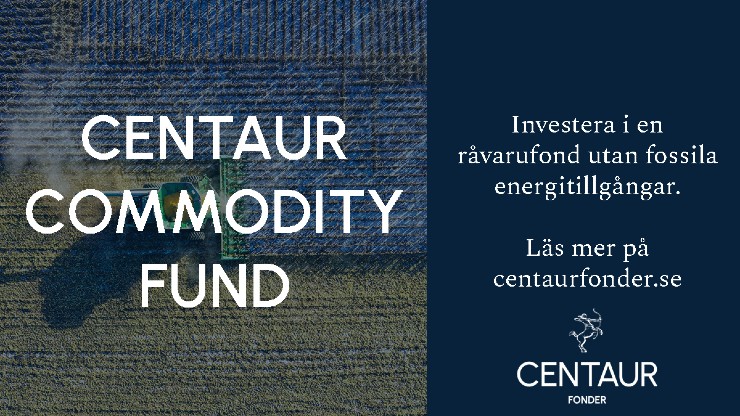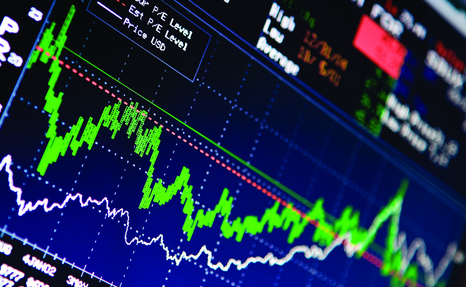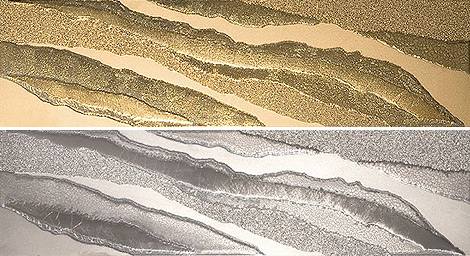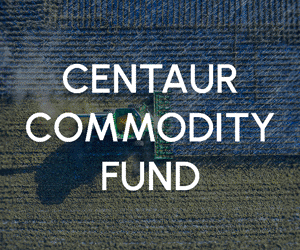Nyheter
David Hargreaves on Precious Metals week 9, 2012
Platinum continues to perplex. For so long, platinum had it over gold in both price and demand. Its lynchpin was its use in automobile exhaust catalysts where it transforms all those horrible fumes into nitrogen and water. As GDP rises, so does the demand for autos and so…fait accompli. The price is still strong, relatively, but it lags gold instead of leading it whilst not even the most serious of labour disputes in the metal’s home, Rustenberg, are boosting it. Over 17,000 workers have downed tools in the bitterest of disputes, whose reasons are far from clear. Safety-related stoppages abound and world No 3 producer Zimbabwe is playing silly beggars with the mining companies there. Perhaps instead of asking why the price is not orbiting, we should ponder what might happen when peace returns, which it will.
Central Bank Gold Buying figures are at best tardy and unreliable. Now the Financial Times tells us the People’s Bank of China has been a significant buyer, 227 tonnes, in the last three months of 2011. Maybe. Mine production would have been about 100 tonnes, whilst the WGC says domestic demand was 191 tonnes, so there is a gap of about 136 tonnes.
There is much scepticism about this having gone straight into the vaults to boost the 1054 tonnes officially held there. Even if it did, there is far to go before they approach the c. 9000 tonnes held by Fort Knox. Official figures are due out next month.
Whither the gold price? The Gold Report has interviewed one Greg McCoach whose contribution to forecasting includes his “Insider Alert” service. He says gold is going to $6000/oz dragging silver to $70/oz. Now, he doesn’t say when. He goes on to remind us that just to cover the world’s debts it would need to be $19,500/oz. Maybe he has not factored in that for every debtor there has to be a 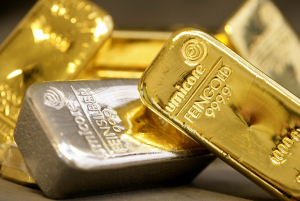 creditor, so world debt nets out to zero. The creditors for the most part are pensioners, hostage to banks, funds, governments, etc., but let’s not go there. No Greg, the true price of gold is at $40,000/oz, that is when we get back to a gold standard and all the paper dollars are divided into all the surface gold. Like you, Greg, we have no idea when that might be. Next he has silver at $400-500/oz against gold at $6000-10,000. Let’s just hear it for a drop of cold water here. Sure, silver is poor person’s gold, but 60% or more of it is used in industry and surface supplies are daunting. At the right price, commercial demand will dry up and all those coins will be melted down.
creditor, so world debt nets out to zero. The creditors for the most part are pensioners, hostage to banks, funds, governments, etc., but let’s not go there. No Greg, the true price of gold is at $40,000/oz, that is when we get back to a gold standard and all the paper dollars are divided into all the surface gold. Like you, Greg, we have no idea when that might be. Next he has silver at $400-500/oz against gold at $6000-10,000. Let’s just hear it for a drop of cold water here. Sure, silver is poor person’s gold, but 60% or more of it is used in industry and surface supplies are daunting. At the right price, commercial demand will dry up and all those coins will be melted down.
The world needs fly-away price theorists, if only for amusement value. We do not presently subscribe. India’s 2012-13 Gold imports may fall 35%, says a government panel. They topped $58 bn in 2011 (that’s about 1,000 tonnes), but will dip to $38bn this year. It still hits the current account deficit and with inflation at 5-6%, becomes less attractive. Import duties are now 2% on value of gold and 6% on silver. There is no suggestion of imports being banned.
And silver? Today the gold price is about 50x that of silver and its newly mined production about one fifteenth. India takes in about 1000 tonnes, one-third of all gold mined annually and traditionally about 3000 tonnes of silver. So the ratios are askew. In 2011 the country imported 4800 t and looks to do 5000t this year. Are these sizeable increases a reflection fo the rising gold price? Highly likely, particularly as gold imports are forecast to drop below 900t. So the price ratio could well be persuaded to narrow in favour of silver.
[hr]
About David Hargreaves
David Hargreaves is a mining engineer with over forty years of senior experience in the industry. After qualifying in coal mining he worked in the iron ore mines of Quebec and Northwest Ontario before diversifying into other bulk minerals including bauxite. He was Head of Research for stockbrokers James Capel in London from 1974 to 1977 and voted Mining Analyst of the year on three successive occasions.
Since forming his own metals broking and research company in 1977, he has successfully promoted and been a director of several public companies. He currently writes “The Week in Mining”, an incisive review of world mining events, for stockbrokers WH Ireland. David’s research pays particular attention to steel via the iron ore and coal supply industries. He is a Chartered Mining Engineer, Fellow of the Geological Society and the Institute of Mining, Minerals and Materials, and a Member of the Royal Institution. His textbook, “The World Index of Resources and Population” accurately predicted the exponential rise in demand for steel industry products.
Nyheter
Oljepriserna slaktas på samtidiga negativa faktorer

Både WTI- och Brent-oljan har idag fallit med omkring 7 procent, där WTI handlas kring 66,50 USD och Brent kring 69,89 USD. De kan dessutom tilläggas att USAs valuta idag faller mot i princip alla andra valutor, vilket gör oljepriset för alla utanför USA har fallit ännu mer.
USA:s handelskrig mot alla världens länder, förutom Ryssland, har skadeskjutit hela världsekonomin vilket förväntas minska efterfrågan på olja. Samtidigt fortsätter OPEC+ att enligt plan trappa ner sin begränsning av oljeproduktionen, dvs man kommer att producera mer olja.
Tullsmärta för amerikansk oljeproduktion
Fallande oljepriser är ingenting amerikanska oljeproducenter gillar. De drabbas dock även på kostnadssidan. Stålrör och andra saker som oljeproducenter använder har belagts med tullar, vilket gör att produktionskostnaderna stiger. Amerikanska oljebolag är det dock svårt att gråta över, de har trots allt finansierat och marknadsfört denna utveckling.
Någonting som USA dock inte införde tullar på är olja. Hade Trump fullföljt de planerna då hade det kunnat bli ett ännu större kaos.
Nyheter
Våren präglas av svängigt elpris och ankkurva
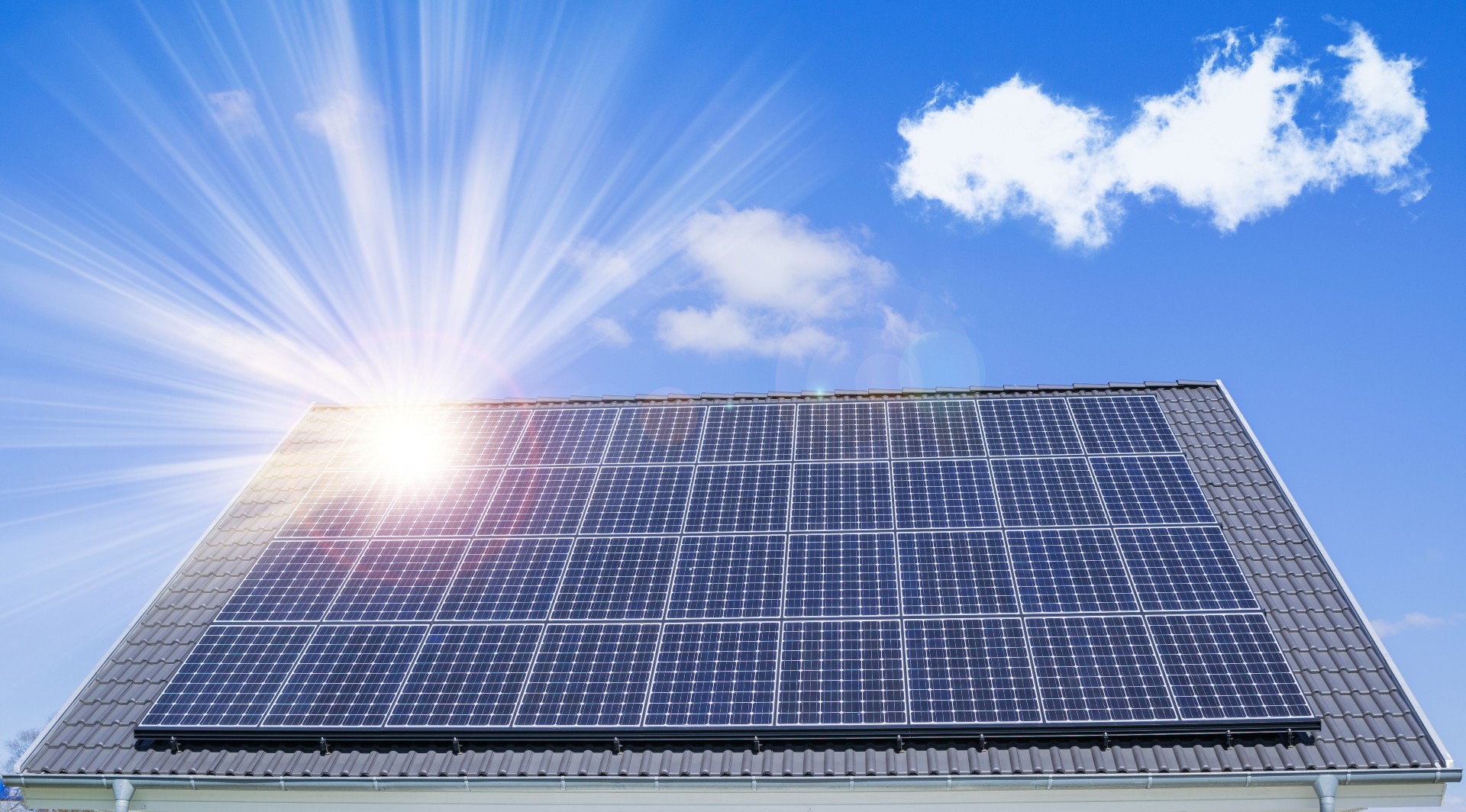
Den senaste tidens starka vindar, tyska solkraft och de välfyllda nordiska vattenmagasinen har bidragit till en god elförsörjning. I kombination med temperaturer ett par grader över det normala och minskad elkonsumtion har elpriset pressats nedåt sedan mars

Elpriset på den nordiska elbörsen Nord Pool (utan påslag och exklusive moms) blev för mars 50,81 öre/kWh i elområde 3 (Södra Mellansverige) och 15,80 öre/kWh i elområde 1 (Norra Sverige). Det är fortsatt stora elprisskillnader mellan elområdena och timpriserna har skiftat kraftigt under dygnet timmar.
– Den goda tillgången på vind- och vattenkraft bidrar till de lägre elpriserna i norr. I södra Sverige var ankkurvefenomenet tydligt i slutet av mars då det kom in mycket solkraft från Tyskland. Detta påverkade elpriset nedåt mitt på dagen, vissa timmar till och med minuspriser, för att sedan stiga raskt mot kvällen, säger Jonas Stenbeck, privatkundschef på Vattenfall Försäljning.
Den nordiska kärnkraften ligger kring 75 procent av installerad kapacitet. I början av mars stod vindkraften vissa timmar för nästan hälften av den totala produktionen vilket bidrog till timmar med låga priser och tom negativa priser. Fyllnadsgraden i de norska och svenska vattenmagasinen är fortsatt hög och den hydrologiska balansen, måttet för att uppskatta hur mycket energi som finns lagrat i form av snö, vattenmagasin och grundvatten, ligger över normal nivå.
Det råder fortsatt geopolitiska osäkerheter vilket gör att elmarknaden är något osäker. På kontinenten har priset på gas sjunkit men priserna på olja och kol har stigit något.
| Medelspotpris | Mars 2024 | Mars 2025 |
| Elområde 1, Norra Sverige | 56,60 öre/kWh | 15,80 öre/kWh |
| Elområde 2, Norra Mellansverige | 56,60 öre/kWh | 10,95 öre/kWh |
| Elområde 3, Södra Mellansverige | 59,47 öre/kWh | 50,81 öre/kWh |
| Elområde 4, Södra Sverige | 63,36 öre/kWh | 60,46 öre/kWh |
Ankkurva: Ankkurvan beskriver hur elproduktionen från förnybara energikällor, särskilt solenergi, påverkar elnätet över en dag. Kurvan har fått sitt namn eftersom grafen över elproduktion och efterfrågan under en dag liknar profilen på en anka.
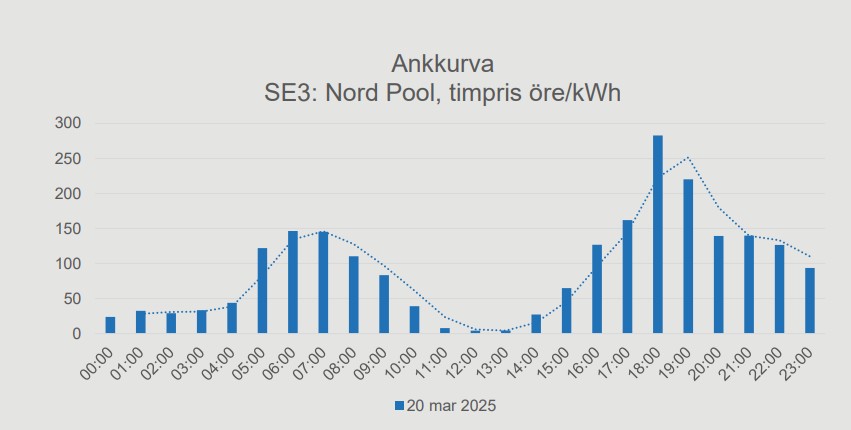
Nyheter
Guld kostar över 3100 USD per uns och 1 miljoner kronor per kilo

För några veckor sedan passerade guldpriset den jämna och fina nivån av 1 miljon kronor per kilo. Något senare passerade priset den fantastiska nivån av 3000 USD per uns. Men när det senare hände så hade den svenska kronan förstärkts så priset var tillbaka under 1 miljon kronor.
Nu är dock guldpriset över båda dessa nivåer samtidigt. I skrivande stund är guldpriset 3 123 USD per uns och några få kronor över 1 miljon kronor per kilo. Detta trots att den svenska kronan ligger kvar kring 10 kronor per USD, en nivå som det var länge sedan vi hade.
Trump-administrationen har kastat både ekonomi och världsordning in i ett kaos, och det är till guld som många vänder sig för att i alla fall skydda sina egna ekonomiska tillgångar.
-
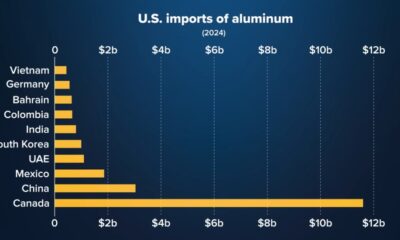
 Nyheter3 veckor sedan
Nyheter3 veckor sedanUSA är världens största importör av aluminium
-

 Analys4 veckor sedan
Analys4 veckor sedanOversold. Rising 1-3mth time-spreads. Possibly rebounding to USD 73.5/b before downside ensues
-

 Analys3 veckor sedan
Analys3 veckor sedanCrude oil comment: Unable to rebound as the US SPX is signaling dark clouds on the horizon
-

 Analys3 veckor sedan
Analys3 veckor sedanCrude oil comment: Not so fragile yet. If it was it would have sold off more yesterday
-

 Nyheter2 veckor sedan
Nyheter2 veckor sedanPriset på koppar skiljer sig åt efter tariffer
-

 Analys2 veckor sedan
Analys2 veckor sedanOil prices climb, but fundamentals will keep rallies in check
-

 Analys2 veckor sedan
Analys2 veckor sedanCrude oil comment: Ticking higher as tariff-panic eases. Demand growth and OPEC+ will be key
-

 Nyheter1 vecka sedan
Nyheter1 vecka sedanEtt samtal om råvarorna som behövs för batterier




